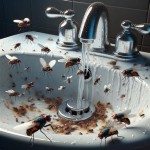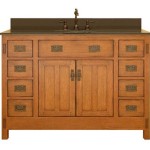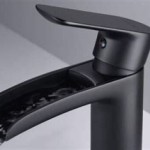Cleaning Mold Off Bathroom Ceiling Vinegar: A Step-by-Step Guide
Mold growth in bathrooms is a common problem caused by the combination of moisture and warmth often present in these spaces. Mold can appear in various forms, including black, green, or white patches, and often forms on surfaces like the bathroom ceiling. While mold can be unsightly, it can also pose health risks, especially for individuals with allergies or respiratory problems.
Fortunately, cleaning mold off the bathroom ceiling with vinegar is a safe and effective method. Vinegar's acidic properties are known to kill mold and mildew, making it an ideal natural solution for cleaning and disinfecting surfaces. This guide will provide a detailed explanation of the process, highlighting key steps and safety precautions.
Prepare the Area
Before you begin cleaning, it is essential to prepare the area to ensure both safety and effectiveness. This involves gathering the necessary materials, protecting yourself, and ensuring proper ventilation.
First, gather the following materials:
- White vinegar
- Spray bottle
- Microfiber cloth or sponge
- Protective gloves
- Mask or respirator
- Ladder (if necessary)
- Old towels or drop cloths
Next, protect yourself by wearing protective gloves and a mask or respirator to avoid inhaling mold spores. If the mold growth is extensive, consider wearing disposable clothing to prevent contamination of your personal items. Ensure adequate ventilation by opening windows or using a fan.
Finally, cover the floor with old towels or drop cloths to protect it from any drips or splashes.
Cleaning the Mold
Once the area is prepared, you can begin cleaning the mold. This involves applying the vinegar solution, allowing it to sit, and then removing the mold.
Fill the spray bottle with undiluted white vinegar. Spray the affected areas thoroughly, ensuring the entire mold patch is covered with vinegar. Allow the vinegar to sit for at least 30 minutes, preferably longer, to kill the mold and loosen its grip on the ceiling.
Using a clean microfiber cloth or sponge, wipe away the mold and the vinegar solution. For stubborn mold, you may need to gently scrub the area with a soft-bristled brush. Rinse the cleaning cloth or sponge frequently to prevent spreading the mold. Continue cleaning until the mold is completely removed.
Preventing Future Mold Growth
While vinegar can effectively remove existing mold, preventing future growth is equally important. Several steps can help minimize moisture and discourage mold growth.
Ensure adequate ventilation in your bathroom to reduce humidity. Use an exhaust fan during and after showers to remove moisture from the air. After every shower, wipe down the bathroom surfaces, including the ceiling, to remove any excess moisture.
Inspect the bathroom for leaks and repair them promptly. If you notice condensation on the walls or ceiling, it is a sign of excessive moisture. In addition to ventilating the room, consider using a dehumidifier to control humidity levels.
Regular inspections of your bathroom for signs of mold growth are crucial. By addressing mold promptly and implementing preventative measures, you can maintain a healthy and mold-free bathroom environment.

I Tried Out Mrs Hinch Fans 29p Mould Removing And These Were The Results Express Co

Bathroom Ceiling Cleaning Getting Mold Off Ceilings With Vinegar

I Tried Out Mrs Hinch Fans 29p Mould Removing And These Were The Results Express Co

Bathroom Ceiling Mold Removal When To Clean Call Branch Environmental

Bathroom Ceiling Cleaning Getting Mold Off Ceilings With Vinegar

How To Remove And Kill Mold Bleach Vs Vinegar

Does Vinegar Kill Mold And Mildew What Works Doesn T

How To Remove Ceiling Mold Diy Methods

Don T Let Mould Take Over How To Remove It From Your Ceiling

How To Kill Mold With Vinegar 14 Steps Pictures Wikihow
Related Posts







